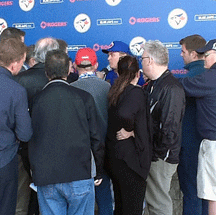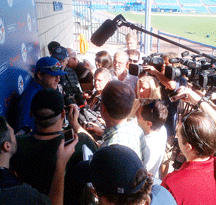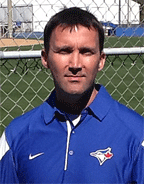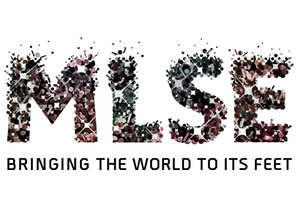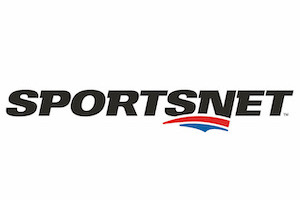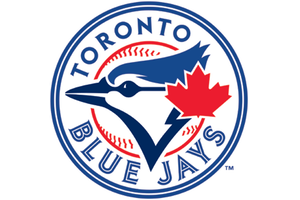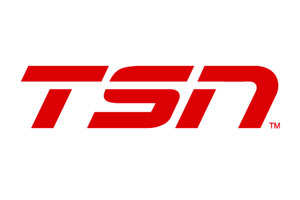By John Iaboni
Executive Vice President, Sports Media Canada
DUNEDIN – They converge en masse on this city (population just under 36,000) in early February and leave come late March when the Blue Jays fly north.
They are equipped with pens, notepads, tape recorders, photo cameras, video cameras, social media devices, story ideas and boatloads of questions. They are sports journalists on the Toronto Blue Jays beat, providing insights and this season, conveying buoyant spirits that Canada’s only Major League Baseball team is poised to return to its glory days.
The sports media coverage this winter has been far more excessive than in previous years, a clear indicator that the Blue Jays are “hot” and very much “favourites” once April comes along and the seasons gets under way. Everyone in the media, it seems, wants in on the story, right from the get-go of Spring Training.
The Blue Jays core boasts power in Jose Bautista and Edwin Encarnacion; the pitching rotation retains Brandon Morrow and Ricky Romero. But Blue Jays GM Alex Anthopoulos – with the support of club President Paul Beeston and the ownership at Rogers – created an offseason media and fan frenzy with the additions of R.A. Dickey, Mark Buehrle, Josh Johnson, Jose Reyes, Emilio Bonifacio, Melky Cabrera, Maicer Izturis and Mark DeRosa. John Gibbons was installed as manager for his second tour of duty with the Blue Jays, looking to complete what his teams couldn’t do the first time around.
There’s a definite buzz full of lofty expectations. Ticket sales are on a steady uptick; fans in larger numbers are also making Dunedin a winter destination to get a peek at what the media is talking about. Heck, a CBS crew from 60 Minutes was even down here for a while, prepping a piece it will air on knuckleballer Dickey, a reigning Cy Young Award winner whose off-field challenges and exploits make him more than just a sporting hero.
Throughout the entire calendar year, the responsibilities for Blue Jays communications are handled by four full-time employees: Jay Stenhouse (Vice President, Communications), Mal Romanin (Manager, Baseball Information), Erik Grosman (Coorindator, Baseball Information) and Sue Mallabon (Coordinator, Communications).
During the initial phase of Spring Training, the players report to the clubhouse at Florida Auto Exchange Stadium, change into their uniforms and are taken by bus about 10 minutes away to the club’s Minor League facility (the Bobby Mattick Training Center at Englebert Complex). The day usually runs from 8 a.m. until early afternoon.
Now that Grapefruit League games have started the Blue Jays check in daily to Florida Auto Exchange Stadium. If they’re playing a home game, they’ll all work out there; if it’s a road game, the players chosen for that day head by bus to the game site while those left behind go through daily drills.
Every step if followed by baseball media. It’s anticipated that this Spring Training will continue to see media numbers swell as more from up north and “outsiders” around the USA want to see projected power, speed and arms of the 2013 Blue Jays.
“We’ve certainly seen the excitement that the fans have and it seems the media is echoing that as well,” Stenhouse says. “We’ve had increased attention from both the Canadian media, outfits that I’ve never seen come to Spring Training during the time I’ve done this.”
Given the depth of the Rogers family, its commitment to this sporting property is extensive in terms of writers (Sportsnet Magazine and web site/social media) and broadcasters (Sportsnet TV and radio). But the sports media presence beyond Rogers is significant as well.
“There’s a huge increase in the amount of attention,” Stenhouse says. “I think we’ll see even more when we play some of the visiting teams. It won’t be a case of sending just one or two, they’ll send more to cover us and not just for their own team whereas some years they’d come over to cover their team alone.”
Stenhouse is confident he and his team can meet the demand.
“I hope we continue to operate as is,” he says. “We’ve handled big media crowds before it’s just that now we’re doing it every day. On a personal level my big thing is trying to make sure it works well for the players so that they aren’t being worn out and they turn around by May and June and say they’re tired of doing all these things. I work to try and make sure that the players are happy doing their media interactions and don’t get worn out so that we can do it all year long.”
OK, Jay, we’ve seen the sports media and fans swept up by the excitement what’s the ride been like for your department and what will it mean in terms of workload?
“All offseason you’re sitting at your desk and all of a sudden, you get word of the next move and it’s like, that’s OK, that fits in here, that fits in there, get those press releases, get everything ready to go and it reinforces that this is a job where we’re all fans, too,” Stenhouse says, his eyes lighting up with enthusiasm.
“Until someone reminds you sometimes of the time commitment you’re making you don’t even realize it because you’re having so much fun because you’re a fan. Our group’s really excited. They know there’s more work ahead with a busier season and the expectations but they’re excited about it, no one’s said ‘I don’t know about this year this might be more work for me’ and I don’t think you’re going to hear that from our department.”
